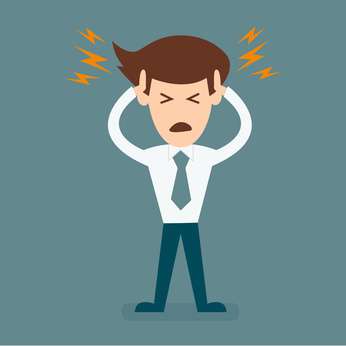As if you didn't know it, stress – especially at work – is an ever-growing concern. It affects the productivity, health, and morale of staff, and this in turn hits performance of the team, and ultimately the whole company. Policies that track and reduce workplace stress go on to build healthier work environments – and this leads to better employee retention and engagement.

This article provides a run-through of ways to manage workplace stress by enhancing employee security and well-being. We hope it will give you some ideas on changes you can make in your own environment.
Understanding Workplace Stress
Why does it happen?
Workplace stress happens when employees feel overwhelmed by job demands. According to a recent study by the American Institute of Stress, 83% of workers said they experience some kind of job-related stress. The more sobering fact is that nearly 25% identify their job as their main source of stress. This inevitably leads to burnout, reduced motivation, and a whole range of physical and mental health issues if it's not addressed.
Common causes of workplace stress
- Excessive Workload: Employees often struggle to meet tight deadlines or manage unrealistic expectations
- Role Ambiguity: Lack of clarity about job responsibilities creates confusion and anxiety
- Limited Control: Feeling powerless over decisions or tasks raises frustration
- Inadequate Support: Absence of support from managers or even peers exacerbates the problem
- Workplace Conflicts: Interpersonal issues add unnecessary tension
The impact of workplace stress
Unchecked stress leads to a reduction in employee performance, increased absenteeism, and higher staff turnover. This leads to lower productivity and even higher healthcare costs. The World Health Organization (WHO) even goes so far as to say that workplace stress
costs the global economy $1 trillion annually in lost efficiency.

If you'd like to learn more about managing your stress, why not take a look at how we can help?
Reduce your stress for a happier life with our online courses.
RRP from $89 – limited time offer just $12.99
Why You Need to Monitor Workplace Stress
The Benefits of monitoring
There are several major benefits to proactively tracking stress levels:
- Identification of high-risk employees or teams
- Addressing problems before they escalate
- Improved employee morale and engagement
- More efficient operations
Challenges in tracking
But there are several challenges to meet along the way:
- Privacy Concerns: Staff may feel uneasy about sharing their personal data
- Technology Limitations: Not all tools are equally effective, or even affordable
- Resistance to Change: People are often reluctant to adopt new monitoring systems
Innovative Monitoring Methods
Wearable trackers
Wearable devices like smartwatches and fitness bands monitor indicators like heart rate and cortisol levels which provide real-time insights into stress levels. And taking it further, employers can aggregate anonymized data to identify trends and take action in good time.

AI-powered tools
There are nowadays an increasing number of Artificial intelligence (AI) tools that analyze patterns in behavior. This can include the tone of emails, the frequency of communication, and the overhead associated with meeting. Microsoft's Viva platform, for example, can show up work habits that may suggest when there's a risk of burnout.
Employee Feedback Platforms
A great idea to get accurate feedback is to use anonymous surveys and feedback tools. These highlight concerns about workload, management, and the culture of the workplace. Platforms like Culture Amp and SurveyMonkey are among the leaders in providing information from aggregated responses.
Stress-tracking apps
There are also mobile apps like Calm and Headspace which help people to track their mood and stress levels. And again, putting all this together can help to update company-wide policies on stress reduction.
Environmental sensors in workspaces
Advanced sensors monitor factors like noise levels, lighting, and air quality, which influence stress. It's been shown, for instance, that poor lighting and high noise levels are often linked to increased anxiety.
Video analytics
Another great way to create productivity alerts is by the use of
video analytics systems. These can work through things like absence detection, pallet counting, and asset idle detection, which will contribute to a more productive work environment. This also enables managers to detect unusual activity and act in time to maintain safety and security.
Effective Strategies to Reduce Workplace Stress
Flexible work models
It's also possible to offer flexible work arrangements, such as remote work, variable hours, and compressed workweeks. This lets people manage their responsibilities effectively, and when controlled properly, often gets jobs done more quickly.
Onsite wellness resources
Investing in wellness programs like meditation rooms, fitness facilities, and relaxation spaces promotes physical and mental health because employees feel valued and supported. This is often very successful - and
Google's comprehensive wellness programs with onsite gyms, massage therapy, and mindfulness sessions, are an excellent example of how to do it right.

Mindfulness and meditation training
Workshops focusing on mindfulness, progressive muscle relaxation, and breathing techniques equip people with tools to manage their stress effectively. Regular mindfulness practice, for example, has been shown to lower cortisol levels and improve focus.
Recognition and reward systems
An excellent way to boost morale and mitigate stress is to recognize staff achievements through awards, bonuses, or public recognition. A Deloitte study found that 69% of employees feel more motivated when their efforts are appreciated.
Employee assistance programs (EAPs)
EAPs provide confidential support for employees who need to deal with personal and professional problems. Services often include counseling, financial advice, and mental health resources.
Quick Takeaways
- Monitoring workplace stress is essential for improving employee well-being and overall efficiency
- Innovative tools like wearables and AI provide effective ways to track stress levels
- Flexible work models and wellness programs significantly reduce stress
- Recognition systems and EAPs enhance morale and provide valuable support
- Early detection and intervention are key to mitigating any kind of workplace problems
In Conclusion…
Addressing workplace stress isn't just an ethical requirement but a commercial one. By using the ideas we've outlined here – tailored, of course, to their own needs – companies can create a healthier, more productive work environment.
People react well to policies like prioritizing employee well-being, and this ensures long-term success. It's a wise decision to invest in policies that empower your workforce and reduce stress, because they'll drive sustainable growth - which will be a clear route to your organization's success.




























